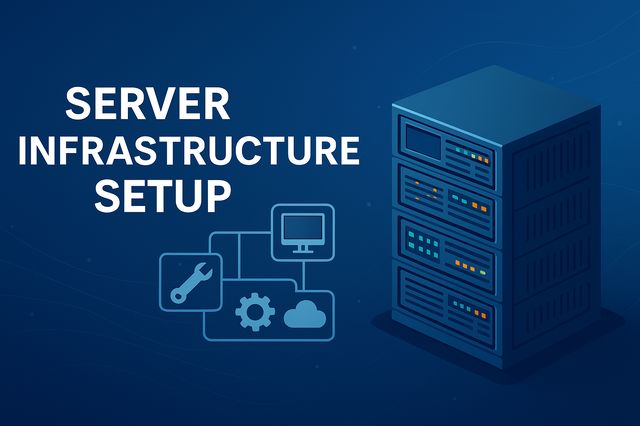High Availability (HA) firewalls ensure business continuity by eliminating single points of failure in network security.
They use redundancy, session synchronization, and automated failover to maintain protection during hardware or link failures.
For SMBs and enterprises alike, HA is not just a technical upgrade it’s a strategic necessity to keep operations, compliance, and trust uninterrupted.
The Hidden Cost of Network Downtime
Every second your network is offline, your business loses more than connectivity | it loses revenue, credibility, and customer trust. In today’s digital environment, availability is not a luxury but a foundational requirement.
Firewalls are the gatekeepers of every corporate network, yet many organizations underestimate the true cost of firewall downtime. A single failure in a perimeter device can halt operations across multiple systems, disrupt communications, and open vulnerabilities that attackers can exploit within minutes.
According to IBM’s 2024 Data Breach Report, the average cost of an outage driven by security misconfiguration or device failure surpassed four million dollars. That number is not theoretical | it represents lost productivity, SLA penalties, recovery expenses, and long-term reputational impact.
High availability has therefore evolved from a technical enhancement to a business safeguard. It ensures that even if one firewall fails, another immediately takes over with no interruption to traffic flow. For industries like banking, healthcare, manufacturing, and e-commerce, that continuity directly translates to compliance, uptime, and client confidence.
The Business Impact | Downtime is more than an IT problem | it is a business crisis that affects brand trust, operational efficiency, and financial stability. High availability firewalls transform downtime from a high-risk event into a managed, recoverable process.

Understanding High Availability in Modern Firewalls
High availability, often abbreviated as HA, is the capability of a system or network component to remain operational for extended periods with minimal interruptions. In firewalls, HA means designing two or more units that work together so that if one fails, traffic automatically shifts to the standby device without disrupting active sessions.
Cisco defines high availability as the ability for components to operate continuously without human intervention. NordLayer expands this view by emphasizing stateful failover, where ongoing sessions remain intact during a switchover. Together, these definitions outline a key goal | eliminate single points of failure and maintain protection even under stress.
True redundancy means that all critical systems have backup counterparts. Each component, from the power supply to the management interface, should be mirrored or clustered. HA is not disaster recovery | it is real-time resilience. Disaster recovery addresses large-scale outages after they happen, while HA ensures continuity as the event occurs.
Common deployment models include Active Active, Active Passive, and N plus 1
In an Active Active configuration, all firewalls process traffic simultaneously, providing load balancing and instant failover.
Active Passive pairs a primary unit that handles traffic with a secondary unit standing by.
N plus 1 configurations use one extra firewall to cover multiple active devices, ensuring redundancy at scale.
Mechanisms such as heartbeat monitoring, session synchronization, and configuration replication keep these systems aligned. If a heartbeat fails to respond, the backup device takes over within milliseconds, keeping traffic uninterrupted and security enforcement consistent.
The Business Impact | High availability architecture provides measurable business continuity. Proper redundancy not only prevents service disruption but also proves compliance with frameworks like ISO 27001 and SOC 2, reassuring customers and regulators that uptime is protected by design.
Core Components and Architecture of HA Firewalls
High availability firewalls rely on architecture built around synchronization and redundancy. The system usually consists of two or more devices configured as primary and secondary units, connected through dedicated synchronization links. These links replicate configuration settings, session tables, and routing updates in real time.
Session table replication ensures that active connections remain intact during failover. Without it, users would be forced to reconnect to applications, causing service interruptions. Configuration synchronization guarantees that policies, NAT rules, and VPN parameters remain consistent across all units. This alignment eliminates discrepancies that could compromise enforcement or audit readiness.
A reliable HA design also includes redundant WAN and LAN paths. Each firewall in the cluster connects to independent switches, power supplies, and uplinks. Redundant paths reduce the likelihood of a single component failure causing network-wide downtime.
Latency thresholds and heartbeat intervals determine how quickly failover occurs. If the synchronization delay exceeds safe limits, packet loss or session drops can occur. That is why periodic failover simulations are essential. They validate that transition between units is seamless, confirming real-world reliability.
The Business Impact | A properly engineered topology safeguards both connectivity and data integrity. By replicating every session and configuration, HA firewalls deliver predictable performance under any condition, turning resilience into a measurable KPI rather than an assumption.
Common Challenges and Implementation Pitfalls
While the concept of HA seems simple, its execution presents several challenges.
One frequent technical issue is slow synchronization between firewall units. When latency between heartbeat links increases, failover can become unreliable. In some cases, both units believe they are active, a phenomenon known as split brain. This condition can cause duplicate IP responses, routing conflicts, and even packet loops.
NAT and session conflicts are another risk. When multiple firewalls handle dynamic translations or stateful sessions, inconsistent state tables can disrupt live traffic. Administrators often underestimate the complexity of synchronizing encrypted VPN tunnels, intrusion prevention signatures, and dynamic routing updates.
On the administrative side, documentation gaps and version mismatches are common. When firmware versions differ across paired devices, configuration sync may fail silently. Weak monitoring and a lack of scheduled failover testing can hide these issues until a real outage occurs.
Hidden costs also emerge from licensing and maintenance. Many vendors require separate licenses for both units in a pair, doubling costs. Complex multi-vendor environments introduce additional dependencies, complicating support and updates.
Performance trade-offs must also be considered. Load balancing can improve throughput but may add latency if not tuned properly. Each decision | whether to run Active Active or Active Passive | affects both cost and complexity.
The Business Impact | A poorly configured HA setup can create more risk than it prevents. Inconsistent replication, neglected documentation, or outdated firmware can lead to complete network failure at the worst possible moment. Strong governance and proactive monitoring turn these technical challenges into manageable maintenance tasks.

Best Practices for Reliable HA Deployment
High availability is not a one-time setup | it is a continuous discipline. Organizations that achieve consistent uptime treat HA as an evolving process integrated into their network lifecycle.
Selecting the right topology begins with understanding business scale and risk appetite. Smaller organizations may benefit from Active Passive pairs that emphasize simplicity. Enterprises with heavy traffic or multiple data centers often choose Active Active or N plus 1 clustering for maximum redundancy.
Synchronization must be precise. Administrators should maintain consistent firmware versions and enforce scheduled synchronization intervals. Configuration changes should be version controlled, ensuring rollback options in case of failure. Firmware parity is not optional | differences can break replication logic.
Failover and recovery drills are essential. Simulated outage tests reveal gaps that can otherwise remain undetected. These exercises should include full traffic loads to evaluate latency, throughput, and state retention under pressure.
Security should remain a parallel concern. Management traffic for synchronization must be encrypted and segregated from production flows. Separating management and data planes prevents misconfigurations from exposing administrative channels to public networks.
Continuous monitoring through SIEM or Network Monitoring Systems provides real-time visibility. Automated alerts on heartbeat drops or link latency allow engineers to address degradation before users are affected. Integrating these alerts into incident response workflows transforms reactive troubleshooting into proactive resilience.
The Business Impact | Preventive maintenance and disciplined testing reduce operational risk, optimize resource utilization, and support compliance audits. A reliable HA deployment is proof of operational maturity and strategic foresight.
Conclusion | Building True Network Resilience
High availability firewalls represent the convergence of technology, governance, and business strategy. They ensure that network protection continues even when hardware fails, updates occur, or power fluctuations happen. More importantly, they demonstrate a company’s commitment to reliability and customer trust.
Implementing HA is not simply about adding a second firewall. It requires careful design, proper testing, and a mindset that prioritizes uptime as a measurable business goal. When properly executed, HA reduces incidents, lowers recovery costs, and provides confidence that operations will continue under any circumstance.
Perform a firewall high availability readiness review or request a network resilience assessment. Measure your organization’s uptime capability and take proactive steps to secure continuous operations.

A High Availability firewall is a redundant system designed to maintain network security and uptime by automatically failing over to a standby device if the primary one fails.
Because downtime equals lost revenue and reputation. HA firewalls ensure continuous protection and compliance, even during hardware or connection failures.
The most common models are Active–Active (load balancing), Active–Passive (standby redundancy), and N+1 (one backup unit for multiple active devices).
Typical causes include slow synchronization, version mismatches, misconfigured heartbeat links, and neglected testing all of which can lead to split-brain conditions or downtime.
Maintain firmware parity, encrypt management traffic, test failover regularly, and monitor heartbeat latency with automated alerts and SIEM integration.
HA ensures real-time continuity by preventing downtime, while Disaster Recovery restores systems after an outage has already occurred.
References
What is high availability? – Cisco
The importance of high availability in firewalls for organizations – ostec
How to Set Up a High Availability Cluster – Barracuda Campus
Understanding High Availability in Palo Alto Firewalls: A Complete Guide – exam-labs


